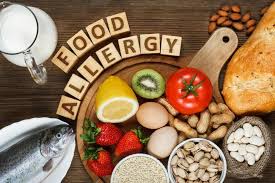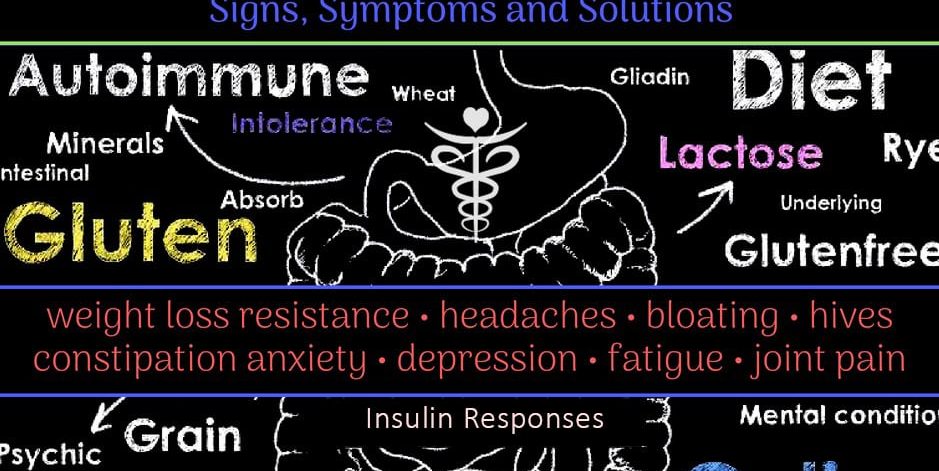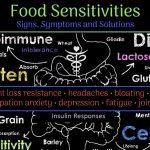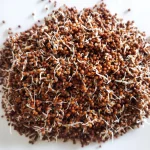A food sensitivity is a delayed, non-life-threatening immune reaction to a specific food or foods. Unlike a food allergy, the symptoms of a food sensitivity can be delayed for a few days after ingesting the food. It’s possible for people with food sensitivities to not understand their sensitivities for years, due to delayed reaction times and symptoms.
So, there are these two types of allergies called IGE and IGG which are related to your immune system. An IgG food allergy should not be mistaken for a classic food allergy (type I). If you have a type I allergy, your immune system produces IgE antibodies. These antibodies lead to an immediate allergic reaction. The symptoms appear within seconds or minutes: severe swelling, breathing difficulty or rashes.
IgG food allergies are type of allergy which we tend to ignore and often remain undetected because the symptoms only occur a few hours or even days after the consumption of a trigger food, making them extremely difficult to identify.
The symptoms include Bloating, headaches, vomiting, inflammation etc. These are caused from regular food we eat. For e.g., wheat chapati, if it doesn’t suit your body and still you continue to eat it that’s when it’s a trigger and a signal that you must stop eating it. So, it’s always advisable to get yourself tested for the same so that this helps to figure out what works best for you.
How to spot a food sensitivity
There are a number of common issues that can be related to your body’s IgG antibody response to certain foods. They include:
- Bloating

- Gastrointestinal distress
- Headaches or migraines
- Stomach pain
- Abdominal cramping
- Anaphylaxis
- Coughing or wheezing
- Dizziness
- Flushed skin, rash, or hives
- Swelling of the face, tongue or lips
- Tingling or itchy sensation in mouth or throat
- Vomiting or diarrhoea
Regularly experiencing feelings like these after eating may mean you have a sensitivity to certain foods, though it’s also possible to experience no symptoms and still have a food sensitivity. You should speak to your doctor and get tested yourself for your IgG reactivity to many common foods. Once you’ve tested yourself and received your results, it should be easy to consume foods and move into right direction.
Several disorders are linked to gluten intolerance, including celiac disease, NCGS, and wheat allergy. All gluten-related disorders may cause extensive symptoms, many of which have nothing to do with digestion problem.
Non-celiac gluten sensitivity is a form of gluten intolerance that may cause headaches, depression, anxiety, brain fog, fatigue, pain, and digestive problems.
Wheat allergy is a type of food allergy that may cause skin rashes, digestive issues, nasal congestion, and anaphylaxis.
Symptoms of gluten intolerance, wheat allergy, and celiac disease often overlap, making it difficult to identify the condition. The best way to get a diagnosis is to work closely with a doctor for the necessary testing and examination.
Gluten-related disorders may have several symptoms and can be annoying to identify the correct symptoms. One should remember that these conditions are common and may differ from person to person. Be rest assured that you aren’t alone and that there are resources to help you out. Speak with a doctor or dietitian for an accurate diagnosis, which will involve a comprehensive evaluation of your symptoms and potential testing.
Fortunately, a reliable diagnostic test and nutritious concept can help Diagnosis and treatment for IgG food allergies
This test measures the number of immunoglobulins in your blood. Immunoglobulins are also called antibodies. Antibodies are proteins that your immune system makes to fight germs, such as viruses and bacteria.
The foods covered by IgG test :
| Cereals (with Gluten) | Alternatives to Cereals | Meat | Fish & Seafood | Milk products | Fruits | Spices & Herbs |
| Barley | Amaranth | Beef | Anchovy | Camel’s milk | Apple | Alfalfa |
| Gluten | Arrowroot | Chicken | Angler, monkfish | Cow’s milk | Apricot | Allspice |
| Kamut | Buckwheat | Deer | Blue mussel | Goat milk and cheese | Avocado | Aniseed |
| Oats | Cassava | Duck | Carp | Halloumi | Banana | Basil |
| Rye | Fonio | Goat meat | Cod, codling | Kefir | Blackberry | Bay leaf |
| Spelt | Jerusalem artichoke | Goose | Crayfish | Mare‘s milk | Blueberry | Caper |
| Wheat | Lupine | Hare | Eel | Milk cooked | Cherry | Caraway |
| Maize (sweet corn) | Lamb | Gilthead bream | Ricotta | Cranberry | Cardamom | |
| Vegetables | Millet | Ostrich | Haddock | Rennet cheese (cow) | Currant | Chervil |
| Quinoa | Pork | Hake | Sheep milk and cheese | Date | Chive | |
| Artichoke | Rice | Quail | Halibut | Fig | Cinnamon | |
| Asparagus | Sweet chestnut | Rabbit | Herring | Legumes | Gooseberry | Clove |
| Bamboo shoot | Sweet potato | Roe deer | Iridescent shark | Grape | Coriander | |
| Beetroot | Tapioca, cassava | Turkey | Lobster | Chickpea | Grapefruit | Cumin |
| Broccoli | Teff | Veal | Mackerel | Fava bean | Guava | Dill |
| Brussels sprout | Wild boar | Ocean perch | Green bean | Honeydew melon | Garden cress | |
| Carrot | Salads | Octopus | Green pea | Kiwi | Garlic | |
| Cauliflower | Egg | Oyster | Lentil | Lemon | Ginger | |
| Celeriac (knob celery) | Argula (Rocket) | Plaice | Mung bean (green gram) | Lime | Horseradish | |
| Chard (beet greens) | Butterhead lettuce | Chicken egg | Pollock | Soybean | Lingonberry | Juniper berry |
| Chili Cayenne | Chicory | Chicken egg-white | Red Snapper | Lychee | Lavender | |
| Chili Habanero | Dandelion | Chicken yolk | Sardine | Seeds & Nuts | Mandarin | Lemon balm |
| Chili Jalapeno | Endive | Goose eggs | Salmon | Mango | Lovage | |
| Chinese cabbage | Iceberg lettuce | Quail eggs | Scallop | Almond | Nectarine | Marjoram |
| Cucumber | Lamb‘s lettuce | Sea bass | Brazil nut | Orange | Mustard seed | |
| Eggplant | Lettuce | Yeast | Shrimp, prawn | Cashew kernel | Papaya | Nutmeg |
| Fennel | Radicchio | Shark | Cocoa bean | Peach | Oregano | |
| Kale (curled kale) | Romaine lettuce | Yeast (beer, bread) | Squid, cuttlefish | Coconut | Pear | Paprika |
| Kohlrabi (turnip cabbage) | Swordfish | Flax, Linseed | Plum | Parsley | ||
| Leek | Mushrooms | Trout | Hazelnut | Pineapple | Black pepper | |
| Molokhia | Tea, Coffee & Wine | Tunafish | Macadamia nut | Pomegranate | White pepper | |
| Okra (lady’s finger) | Bay boletus | Zander | Pine nut | Prickly pear | Rosemary | |
| Olive | Cep (boletus) | Black tea | Peanut | Quince | Saffron | |
| Onion | Chanterelle | Camomile | Pistachio | Raspberry | Sage | |
| Parsnip | Meadow mushroom | Coffee | Algae | Poppy seed | Rhubarb | Savory |
| Potato | Oyster mushroom | Green tea | Pumpkin seed | Sea buckthorn | Thyme | |
| Pumpkin | Shiitake | Nettle | Red algae (Nori) | Sesame | Strawberry | Vanilla |
| Radish (red and white) | Peppermint | Spirulina | Sunflower seed | Yellow plum | Wild garlic | |
| Red cabbage | Sweeteners | Rooibos tea | Walnut | Watermelon | ||
| Rutabaga | Rose hip | Preservatives | ||||
| Savoy cabbage | Agave nectar | Tannin | Thickening Agents | |||
| Spinach | Cane sugar | Benzoic acid (E210) | ||||
| Stalk Celery | Honey (mixture) | Specials | Sorbic acid (E200) | Agar-Agar (E406) | ||
| Sweet pepper | Marple syrup | Carrageen (E407) | ||||
| Tomato | Aloe vera | Guar flour (E412) | ||||
| White cabbage | Aspergillus niger | Pectin (E440) | ||||
| Zucchini (courgette) | Candida | Tragacanth (E413) | ||||
| Candied lemon peel | Xanthan gum | |||||
| Vine leaves |
 In general, it’s best to avoid any substance that may have been revealed as triggering your IgE levels and IgG levels, but be sure to talk about this with your healthcare provider. With time and proper health maintenance, you may be able to decrease the severity of this situation in your body.
In general, it’s best to avoid any substance that may have been revealed as triggering your IgE levels and IgG levels, but be sure to talk about this with your healthcare provider. With time and proper health maintenance, you may be able to decrease the severity of this situation in your body.







